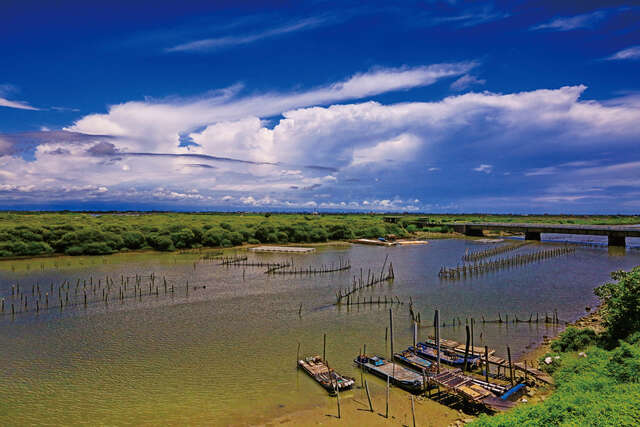Qigu Mangrove Nature Reserve Introduction
Resilient mangroves, showcasing vitality! The name "mangrove" originated from the now-extinct Rhizophora, and today it generally refers to the woody plant communities that grow in the intertidal zones of coastlines. Due to the unique ecological environment of estuaries, mangroves growing along seaside estuaries endure the harsh test of tidal fluctuations every day. The extreme changes in environmental moisture make it difficult for most plants to thrive here, which is why mangroves are also known as "tidal forests." The estuaries of the Qigu River and Jiangjun River both have natural ecological systems of mangroves. Over 300 years ago, the mangroves in this area were already quite lush, and the Ouwang River was referred to as "Green Valley" by the Dutch. Among them, the Qigu River mainly features Rhizophora, while the Jiangjun River is more dominated by Avicennia. The Qigu Mangrove Conservation Area is located near the estuary of the Qigu River, where a large amount of humus and nutrients accumulate due to upstream river activity, making the soil more fertile than typical coastlines. This provides a rich ecological diversity for various species such as crabs, fish, and mollusks, along with numerous bird species, thus constructing a complete food chain. The residents of Qigu mainly rely on aquaculture for their livelihood, and this area of mangroves attracts a large number of egrets, which primarily feed on fish. Along the Qigu Mangrove Conservation Area, there are three-story-high bird-watching pavilions offering excellent views to observe seabirds, egrets, and the unique fishing perspectives of local residents. Recommended viewing point: Mangrove Bird Watching Pavilion.
































